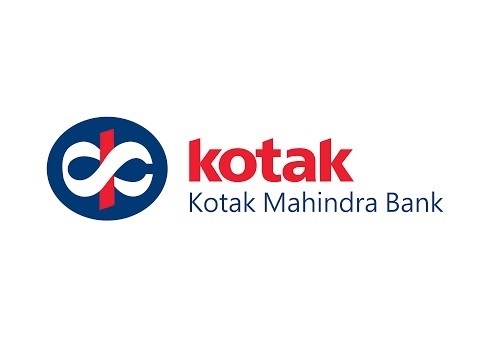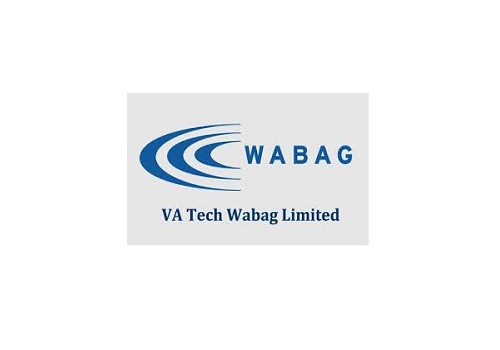Buy Avenue Supermarts Ltd For Target Rs.5,500 By Motilal Oswal Financial Services

Pushing for store addition led growth
We attended DMART’s analyst meet, wherein the management noted that it continues to follow “Everyday low cost - Everyday low price” across Food, FMCG, GM, Apparel and DMart Ready. Here are the key highlights:
* Guidance intact: DMART expects +20%revenue growth while maintaining gross margins of 14.5-15.5%. It expects store additions to account for 10- 15% of revenue growth, while the remaining would come from SSSG.
* Aggressive store addition target: DMART plans to add 40-60 stores per year over the next three years, with a cluster-based expansion strategy.
* Recovering, but expect staying below pre-Covid level: It expects GM&A to be back on track, albeit still below pre-Covid levels (27-28% of sales). The management anticipates a slight rebound to 23% (vs. 22.37% in FY24).
* No plans to enter quick commerce (QC): The company does not intend to enter the QC model and plans to continue to follow the existing ecommerce model (DMart Ready).
* Optimizing ecommerce business: DMART made a deliberate choice to optimize its e-commerce business model rather than focusing on higher growth in order to increase throughput in the existing city.
* We estimate a CAGR of 22%/31% in revenue/PAT over FY24-26E, aided by 11%/9% growth in area/revenue. Maintain Buy
Opportunity to add stores remain intact
DMART has all the appropriate resources, abilities, systems, and technologies to run stores. The company will continue to add stores in the range of 10- 15% despite having a higher base. Currently, the company targets to add 40- 60 stores annually over the next three years, though it could increase the store addition target going forward in order to maintain its 10-15% guidance. The majority of stores are added via the cluster approach, and as the cluster widens and the company enters new untapped geographies (UP, Bihar, etc.), it could give room for more store additions. In FY24, DMART added 70% of the new stores in five states (MH/GJ/TL/KA/AP), where it already has 76% of total stores (the cluster approach). DMART could open stores in both larger and smaller towns, with no concern about the store size as it is ready to open stores based on availability, but it prefers to open larger stores
Witnessing recovery in GM&A but still below pre-Covid level
The gross merchandise & apparel (GM&A) vertical, which has been an issue for the company, has now started recovering for the last 2-3 quarters. Fashion and apparel merchandise are not a forte of DMART; hence, it has taken initiatives (e.g., pricing, hiring new talent, etc.) to solve the issues internally. DMART expects GM&A to get back on track and increase its sales contribution to 23% in FY25 from 22.4% in FY24, albeit still below the preCovid level of 27-28%.
Optimizing ecommerce business
The company has decided to optimize its e-commerce business model rather than focusing on higher growth in order to increase throughput in the existing city. It has added only 1 city (Gurgaon) in FY25 so far and targets to expand its existing footprint in 23 cities. The company is optimizing its business model; hence, instead of reducing area service, it closed 232 pickup locations that were farther than 1-2km (573 in FY23 to 341 in FY24). This should increase the operating leverage for the existing stores. Since the cost of operating the ecommerce business is relatively higher compared to brick-and-mortar stores (due to high manpower requirement and complicated processes), the management took a cost-focused approach and avoided venturing deeper into the ecommerce space.
Valuation and view
DMART clocked a 20% revenue CAGR over FY20-24, led by 18% footprint additions. Subdued SSSG was mainly due to: 1) the addition of bigger stores over the last couple of years (20% rise in average store size), and 2) weak discretionary demand (share of discretionary items reduced to 22% in FY24 from 27% in FY20). However, despite its weak SSSG, DMART has managed to protect its EBITDA margin at pre-Covid levels through its strong cost-control measures, unlike most other retailers. The recovery in revenue/sqft and the reducing gap between revenue/store and revenue/sqft further implied that the share of larger-format stores improved, which is positive for DMART. Moreover, moderating inflation and the revival of discretionary demand could improve SSSG. We estimate a CAGR of 22%/31% of revenue/PAT over FY24- 26, aided by 11%/9% growth in footprint/revenue productivity. We value the company at 52x EV/EBITDA (83x PE) on FY26E to arrive at a TP of INR5,500. We reiterate our BUY rating on the stock.
For More Motilal Oswal Securities Ltd Disclaimer http://www.motilaloswal.com/MOSLdisclaimer/disclaimer.html
SEBI Registration number is INH000000412
.jpg)
.jpg)

.jpg)


.jpg)


















